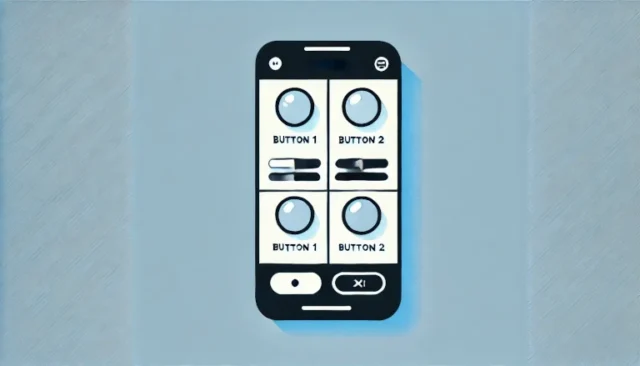Android app development often involves creating responsive user interfaces that provide a seamless experience. One common requirement is to create two buttons of equal size inside a Linear Layout in Android, ensuring a balanced and visually appealing layout. In this guide, you’ll learn everything from the basics of using a LinearLayout to implementing two equally-sized buttons with practical source code.
What is Linear Layout in Android?
A LinearLayout is one of the most commonly used layouts in Android development. It arranges elements horizontally or vertically, making it easier to align UI components in a straight line. When designing layouts with buttons, using a LinearLayout ensures consistent alignment and distribution of space.
Key Features of LinearLayout:
- Supports both horizontal and vertical orientations.
- Allows equal distribution of space using layout_weight.
- Provides flexible UI design options with gravity and padding.
How Linear Layout Works for Equal Button Sizes
To create two buttons of equal size, the layout_weight attribute is crucial. This attribute helps in distributing available space proportionally among the buttons, ensuring they occupy equal width in the layout.
Working Principle:
- Define a LinearLayout with
android:orientation="horizontal". - Assign equal
layout_weightvalues to both buttons. - Set
layout_widthto0dpto enable weight-based distribution.
How to Set Up Two Equal-Sized Buttons in Linear Layout
Follow these steps to implement two equal buttons in an Android Linear Layout:
<LinearLayout
android:layout_width="match_parent"
android:layout_height="wrap_content"
android:orientation="horizontal"
android:padding="16dp">
<Button
android:layout_width="0dp"
android:layout_height="wrap_content"
android:text="Button 1"
android:layout_weight="1"/>
<Button
android:layout_width="0dp"
android:layout_height="wrap_content"
android:text="Button 2"
android:layout_weight="1"/>
</LinearLayout>
Explanation of the Code:
- LinearLayout: Defines the parent container.
- android:orientation=”horizontal”: Aligns child views horizontally.
- android:layout_width=”0dp”: Enables weight-based width distribution.
- android:layout_weight=”1″: Ensures both buttons get equal weight.
Common Issues and Solutions
While implementing equal-sized buttons in LinearLayout, developers might face several issues. Here are some common problems and their solutions:
1. Buttons Not Equal in Size
Solution: Ensure that both buttons have layout_width set to 0dp and equal layout_weight values.
2. Overlapping Buttons
Solution: Use match_parent for the parent layout width to allow sufficient space.
3. Inconsistent Button Text Alignment
Solution: Apply android:gravity="center" to align the button text properly.
Additional Customization Options
You can enhance your buttons with the following styling options:
android:background="@color/primary"
android:textColor="@color/white"
android:padding="10dp"
Adding these properties improves the UI appearance and enhances user interaction.
Conclusion
Creating two equal-sized buttons inside a Linear Layout in Android is straightforward when using the right properties like layout_weight and proper alignment techniques. With a clear understanding of LinearLayout and weight distribution, you can build professional and responsive user interfaces effortlessly.
